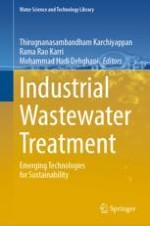2022 | OriginalPaper | Buchkapitel
Optimisation and Modeling Approaches for the Textile Industry Water Treatment Plants
verfasst von : M. Magesh Kumar
Erschienen in: Industrial Wastewater Treatment
Aktivieren Sie unsere intelligente Suche, um passende Fachinhalte oder Patente zu finden.
Wählen Sie Textabschnitte aus um mit Künstlicher Intelligenz passenden Patente zu finden. powered by
Markieren Sie Textabschnitte, um KI-gestützt weitere passende Inhalte zu finden. powered by
